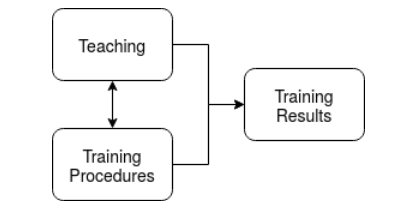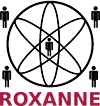Web based Training (WbT) for the engagement of technology providers and LEAs through EU Funded Projects
Nowadays, the use of Web based Training (WbT) in distance learning education/training is considered to be an innovative method of learning. It provides new opportunities for teaching and learning and a sufficient variety of digital based means for both trainers and trainees. In WbT the instruction could be either “synchronous”, meaning that the communication between teacher and learner is simultaneous, or “asynchronous” which means that the student is able to interact at any time, without the teacher's presence. A combination of “synchronous” and “asynchronous” modes can also be adopted for WbT instruction.
In the security domain, where the usage of innovative and state of the art tools becomes a necessity, the continuous training of end-users is a challenge. To this end, the application of WbT approaches can provide the necessary information of the efficient usage of new and emerging technologies. The ROXANNE project presents a great potential for WbT where the training of tools by the technology providers should take place during and after the implementation of the project.
In particular, the application of a WbT Model is suggested and will be applied in the ROXANNE project. The proposed model concerns the teaching of theoretical and technological cognitive objects like speech and natural language processing, video and geographical meta-data processing, network analysis, etc. The teaching material includes not only theory but also concretization skills that require the use of all senses, and aren’t only servile work. In addition, the process of training in such a cognitive object cannot be characterized by simple activities as memorization, rationalization and rethinking. It should also include more composite processes, such as creation, experimentation and feedback.
This model has the following characteristics:
- Educational Material (course material, bibliographic sources and self-assessment material).
- Tools (in digital form: text, pictures, animation, video and educational software).
- Teaching Methods (lecture, demonstration, individual work, group work, discussion with the instructor and assessment).
- Time of Education (At the beginning of each course an overall course time load is suggested to the students. This time is not obligatory for the students and it can be increased or decreased depending on the rhythm of learning. However, it should not exceed a concrete time limit that is set by the teacher for the overall assessment of the course).
- Learning (Training) Theories (Each course is conditioned according to the training frame of the proposed model - the model of cognitive approach and the constructive process of teaching material based on Bloom's theory are applied in the content of the educational material).
The training result is associated with the training procedures during tutoring (Fig.1). Therefore in order to design an educational model, it is important to determine the training framework, that is the procedures considered necessary so as to reach a satisfactory training result.

Figure 1 Factors that influence the training outcome.
The training procedure, both for theoretical sector and lab sector, consists of the following training levels:
- Theoretical Sector .
- Basic level: This level includes the trainees that the diagnostic test ordered to attend training modules of preconditioned knowledge of the domain.
- Medium level: That level includes the trainees that succeeded in the diagnostic test and attend the training modules based on its content.
- Advanced level: On that level there is a close examination of a cognitive subject (with the presentation of specific knowledge and applications (certification)
2. Lab Sector.
- Virtual Lab. Divided into two parts:
- Lab Theory
- Basic level. That level includes the trainees that the diagnostic test ordered to attend the training module of preconditioned knowledge. On that level it is offered training material on practical issues regarding the security domain.
- Medium level. That level includes the trainees that succeeded in the diagnostic test and are going to attend the laboratory course based on its content (Security training modules).
- Advanced level. On that level there is a close examination of a laboratory cognitive subject with the presentation of specific exercises and applications.
- Simulator software or Practical Training.
- Lab Theory
- Practice. Divided in three levels according to the levels of Laboratory Theory:
- Basic level (basic exercises in Security Training Modules)
- Medium level (exercises for Security Training Modules)
- Advanced level (advanced exercises for Security Training Modules)
[1] Papachristos D, Alafodimos N, Arvanitis K, Vassilakis K, Kalogiannakis Μ, Kikilias P, Zafeiri E. An Educational Model for Asynchronous e-Learning. A case study in Higher Technology Education. International Journal of Advanced Corporate Learning 2010;3(1): 32-36.

